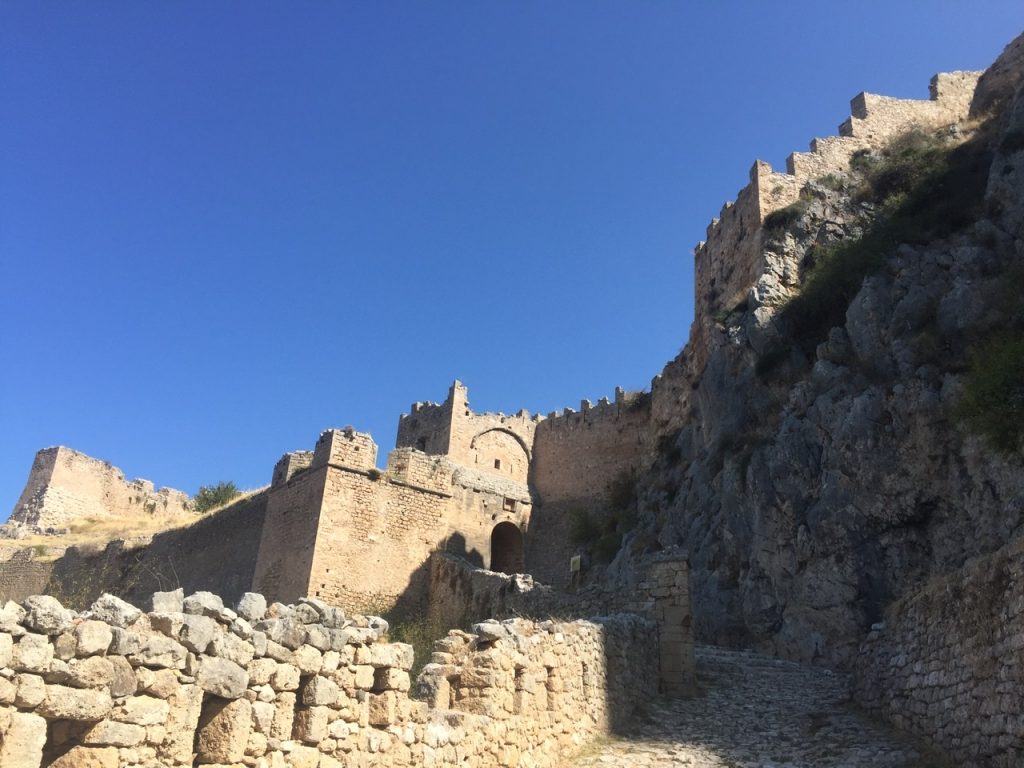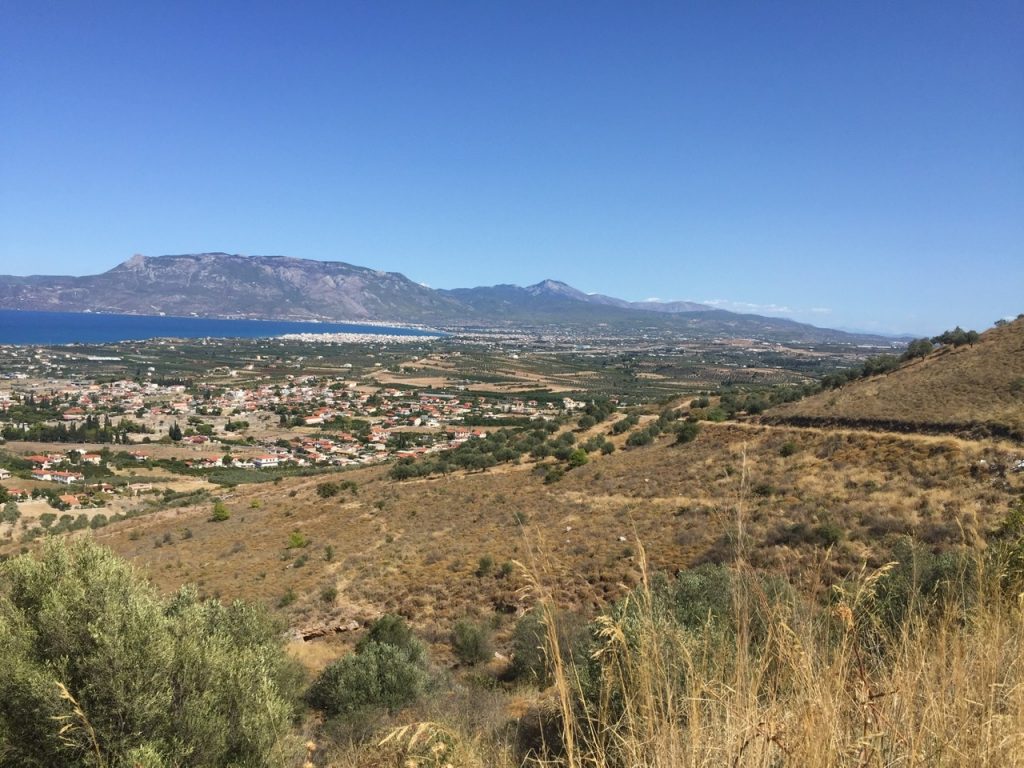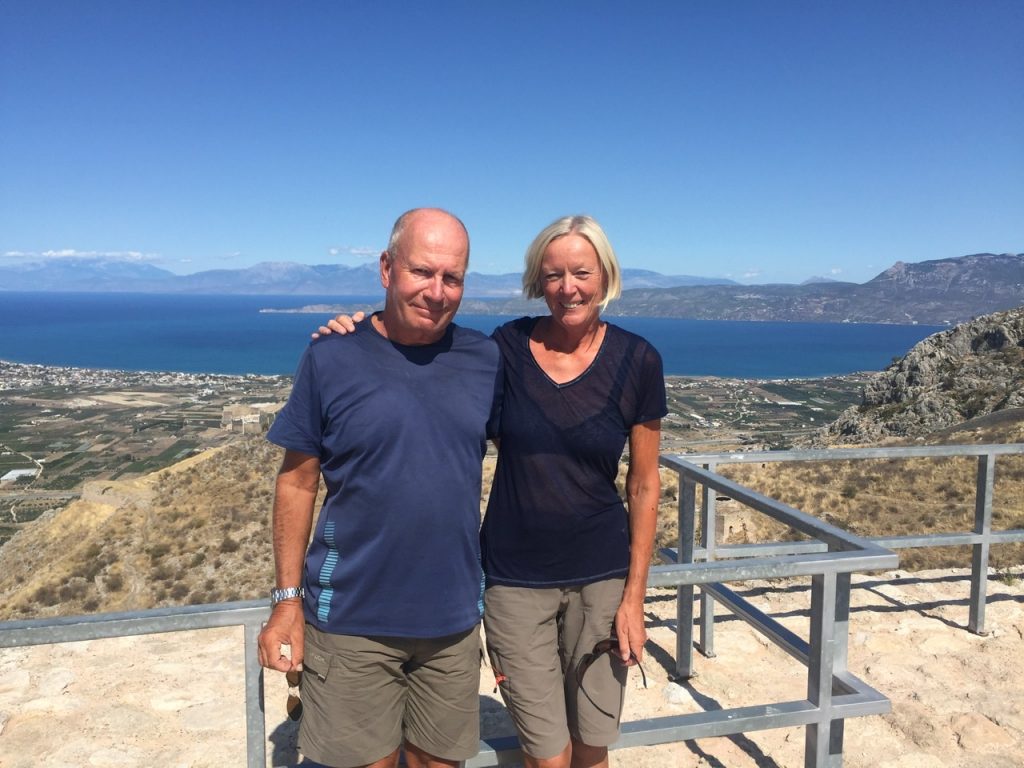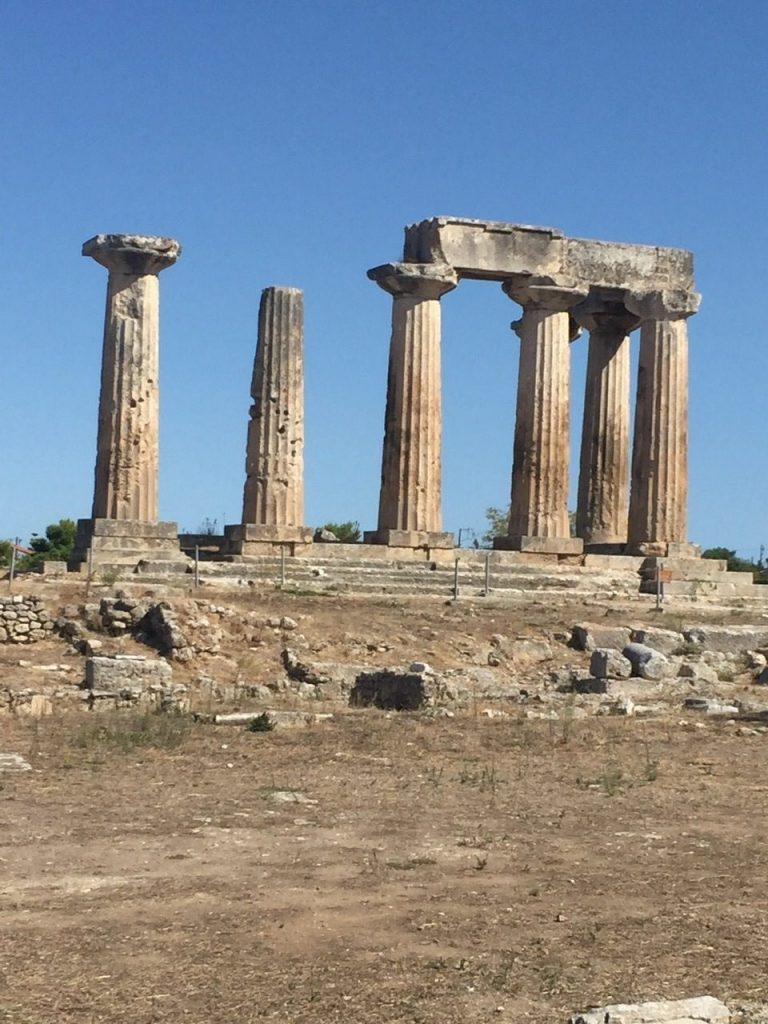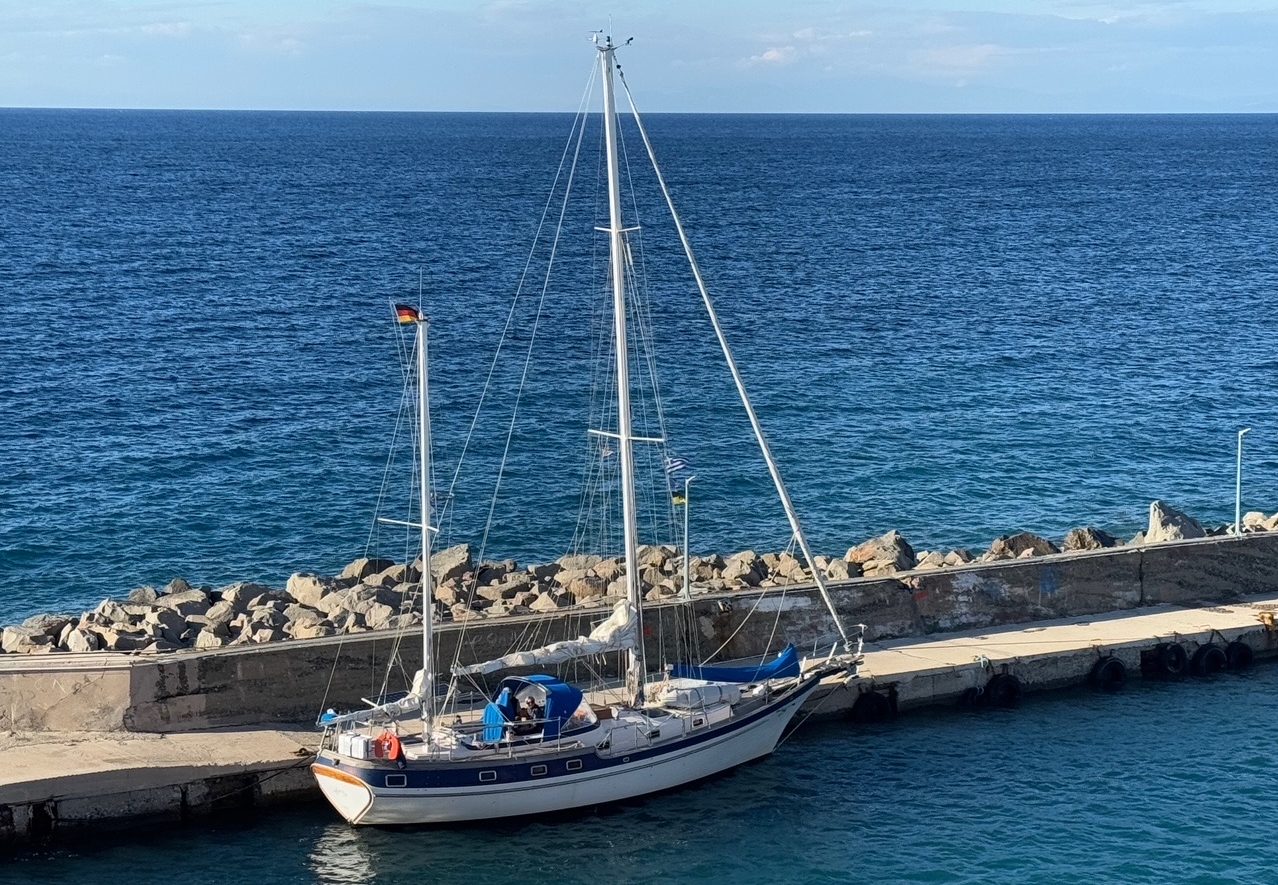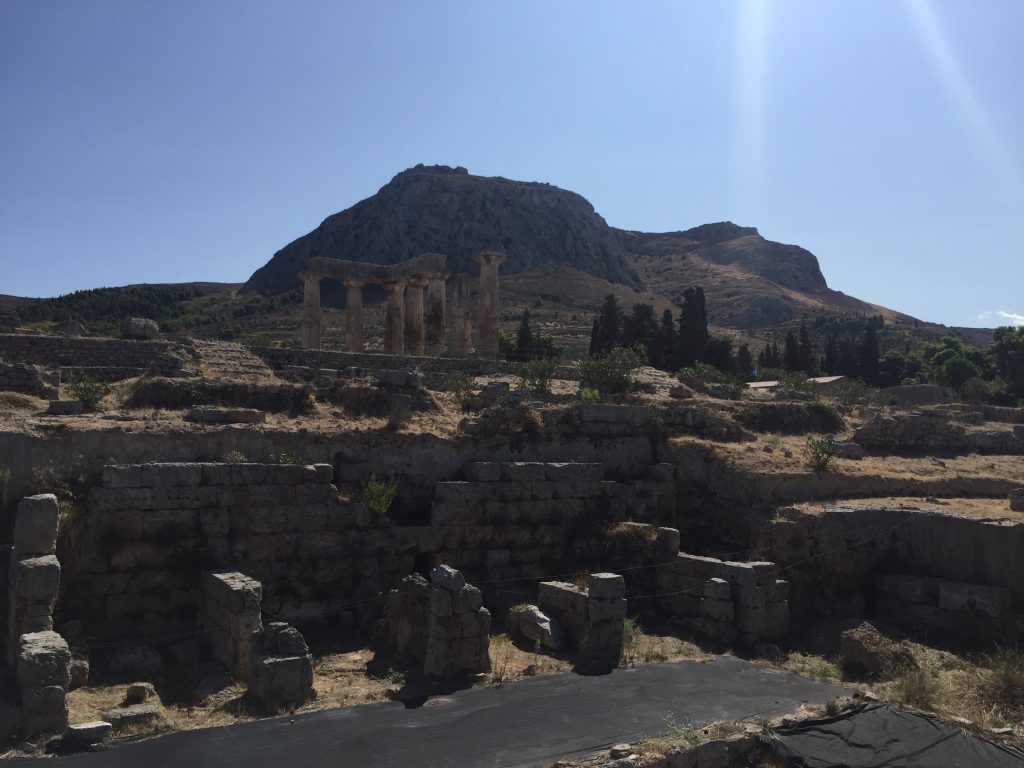
Corinth, the second largest city in the Peloponnese, was destroyed several times by earthquakes and rebuilt in a very pragmatic chessboard fashion. The city is not very pretty - but very lively, many young people, the University of the Peloponnese is here. The huge harbour is not very busy, probably due to Corona and economic crisis.
A few kilometres south of Corinth there is a gigantic single rock, Acrocorinth, 565 m high. It clearly towers above the barren partly karstified, partly volcanic hilly landscape. From its summit there is a breathtaking view to the west of the Gulf of Corinth and the surrounding mountains and the Greek mainland, to the east of the Saronic Gulf with its many islands, a red-brown-green-deep blue composition.
Since the early Greek time, 7th century, the rock was inhabited, a temple of Aphrodite is said to have stood on it. You can visit the by far the largest Greek fortress here, an impressive experience. Several defensive rings stuck to the partly almost vertical rock walls, towers and battlements, meter-thick walls, a cistern, a small church and a mosque stand on the site high above Corinth. The fortress is more than twice as high and much more extensive than that of Nafplion, which is already gigantic. With its strategic position, from which it was possible to dominate the gulf, it was of course always fought over by competing powers: the basic complex was built by the Byzantines in the 7th century. The Franks followed in 1210, then the Palaeologists (the last Byzantine emperors) in the 14th century, then the Knights of Rhodes, then the Turks, then the Venetians, then again the Turks until Greek independence in 1822. Everyone continued to build the fortress, which is one of the reasons why it is so impressive.
With its history, it is typical of the Peloponnese as a whole as a sought-after interface between East and West, as an important station on the trade routes from Italy to Constantinople, and as a transit area for crusaders.
We took a taxi up the steep mountain to the first gate - and after several hours of sightseeing, hiking and clambering through the extensive grounds we walked back by foot, always with the magnificent view of the gulf, down to ancient Corinth with its columns and excavated ancient buildings.
